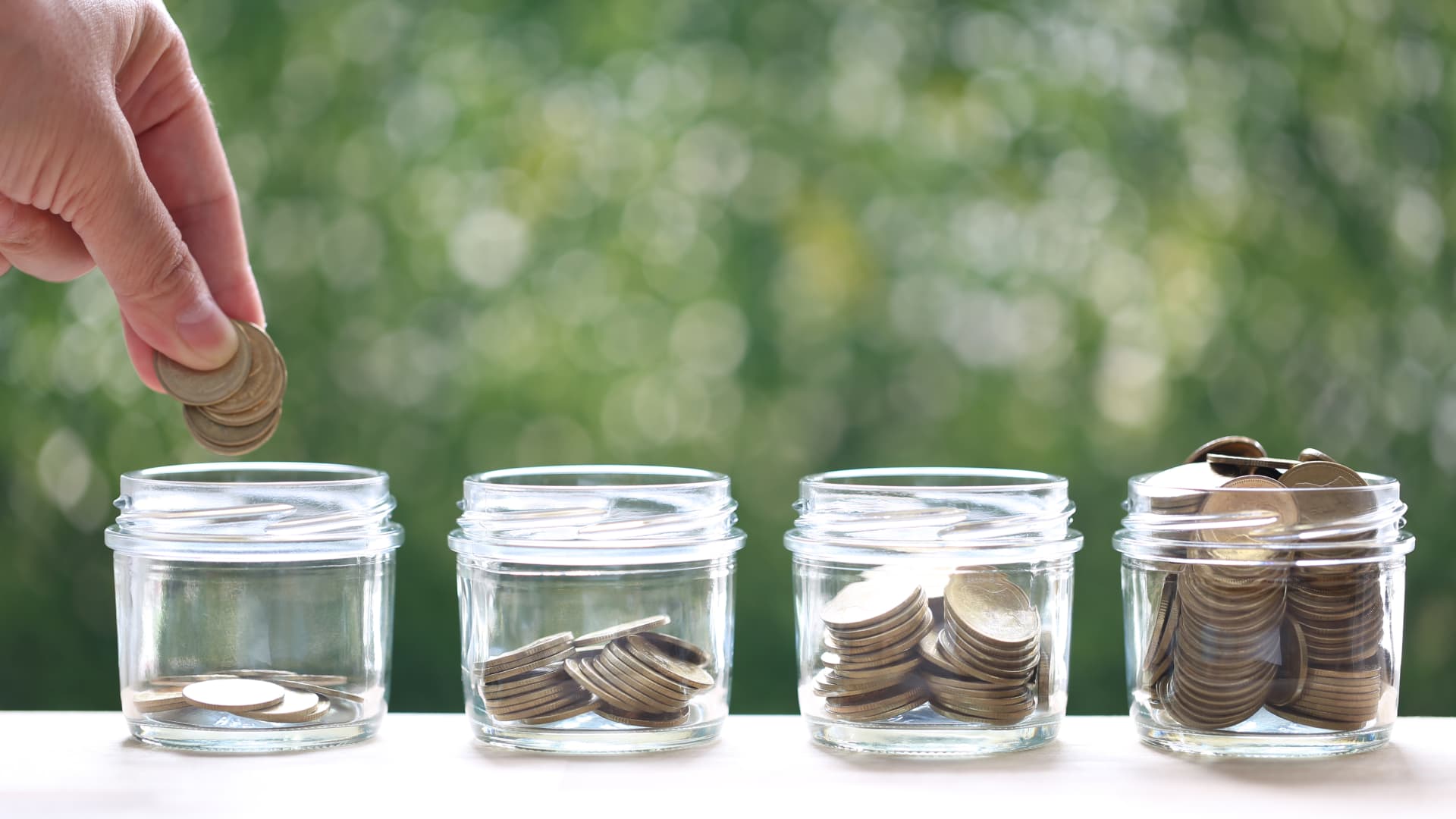If you’re boosting your emergency fund or saving for a short-term goal, a certificate of deposit ladder, or CD ladder, may help you capture higher yields amid interest rate uncertainty.
After a series of interest rate hikes from the Federal Reserve, options for cash, such as high-yield savings, Treasury bills and money market funds have become more competitive.
However, experts say a CD ladder may be worth considering as the Fed weighs an interest rate pause or more rate hikes.
More from Personal Finance:
3 steps to take as investors worry about a recession
Here are the health savings account limits for 2024
Should college grads be financially independent?
“It’s always a tried-and-true strategy,” said Ken Tumin, founder and editor of DepositAccounts.com, a website that tracks the most competitive options for savings. “You don’t have to worry about trying to guess where interest rates are headed.”
Typically, a CD ladder involves splitting equal amounts of cash among multiple CDs with different maturity dates. As the shorter terms expire, you can invest the proceeds into longer-maturity CDs.
“A CD ladder gives someone an opportunity to harvest a variety of yields over varying timelines,” said Bankrate senior economic analyst Mark Hamrick. “And if you’re searching for the highest yields, that can be quite rewarding.”
For example, investors may purchase five CDs, with maturities ranging from one to five years, freeing up 20% of their original investment every year.
Alternatively, you may build a ladder with shorter-term CDs, such as three-month to one-year terms, which provides more flexibility.
While shorter-term ladders offer faster access to cash without a penalty, the trade-off may be missing the opportunity to lock in higher rates for longer-term CDs, Tumin said.
A CD ladder gives someone an opportunity to harvest a variety of yields over varying timelines.Mark HamrickBankrate senior economic analyst
Of course, the decision ultimately hinges on your goals and how soon you’ll need access to the money, he said.
What to know about shorter-term CDs
Typically, investors can expect higher yields from longer-maturity CDs than from shorter-term CDs.
But currently, the opposite is true because of the inverted yield curve, with long-term government bonds paying lower yields than shorter-term bonds, Tumin said.
As of May 22, top one-year certificates of deposit were paying an average of 5.26%, according to DepositAccounts. These rates are the highest 1% average. By contrast, most five-year CDs are paying below 5% on average.
Investors still need a ‘diversified portfolio’
While CD rates have recently been higher, Hamrick pointed out that some still aren’t beating inflation.
Annual inflation rose by 4.9% in April, down slightly from 5% in March, the U.S. Bureau of Labor Statistics reported in May.
“Over the long-term, one needs to have a diversified portfolio, particularly when saving for retirement,” Hamrick said.
